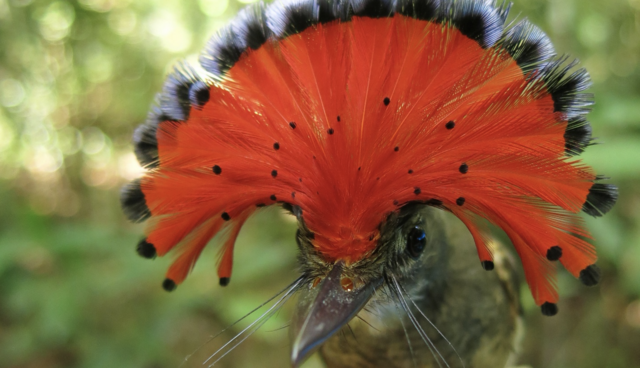Admission CTAs
Mason ornithologist outlines avian biomass and functional diversity impact on Amazon rainforests
In a research paper recently published in the journal Proceedings of the Royal Society B, George Mason University biologist, David Luther led a cross-functional team to use a historical baseline of avian communities to contrast the avian communities in today’s primary forest with those in modern disturbed Amazon habitat. Recent long-term studies in protected Amazon rainforest areas reveal the loss of biodiversity, yet the ramifications for ecosystem resilience remain unknown.
According to Luther, “Probably the most interesting finding is that the modern primary Amazon rainforest contains fewer functionally redundant species—those with similar traits—which makes it less resilient to disturbance, which may ultimately disrupt the ecosystem function.”
Investigators studied how the loss of understory birds, in the lowest stratum of the forest, affect avian biomass and functional diversity in the Amazon rainforest. Research data included information collected over the 30-year project site known as the Biological Dynamics of Forest Fragments Project (BDFFP), managed and supported by Brazil’s Instituto Nacional de Pesquisas da Amazônia (INPA).
In addition to Luther, other coauthors include Mason scientist Justin Cooper, postdoctoral fellow Cameron Rutt, and the late biodiversity expert, Thomas Lovejoy. The team also included Richard Bierregaard Jr, Drexel University; Jared Wolfe, Michigan Technological University; Vitek Jirinec, and Philip Stouffer of Louisiana State University.
“This research effort was only possible because of collaborators who collected the long-term data,” Luther explained. “In particular, Stouffer’s data collection efforts funded by the National Science Foundation and National Institute of Food and Agriculture, U.S. Department of Agriculture, (McIntire Stennis projects) supported the data collection work since 2007,” said Luther.
Researchers found that in primary rainforest, reduced abundance of insectivorous species led to reduced functional diversity, but no reduction of biomass, indicating that species with similar functional traits are less likely to coexist in modern primary forests. Their research suggests avian communities in modern primary Amazonian rainforests are less resilient, which may ultimately disrupt the ecosystem in dynamic and unforeseen ways.

